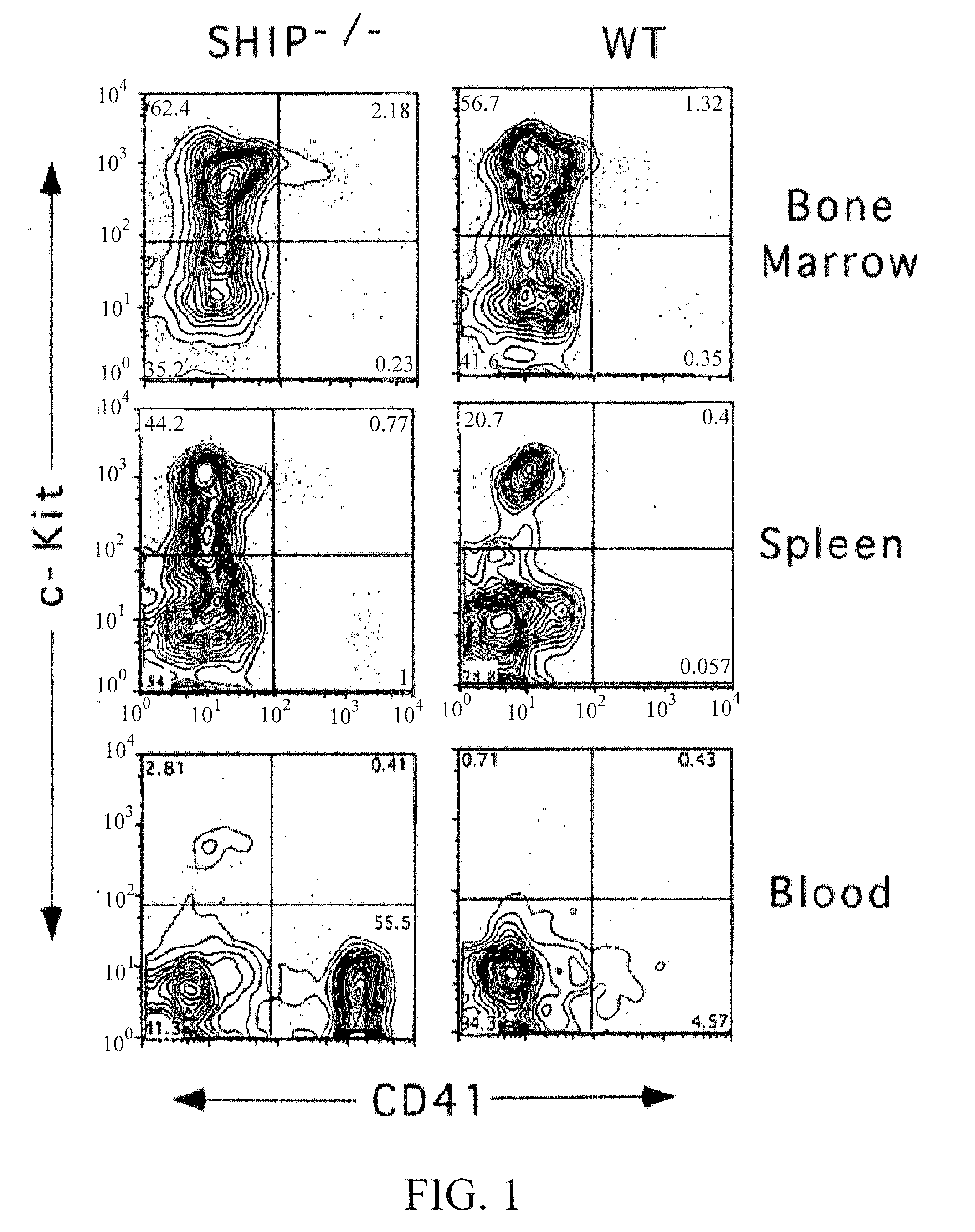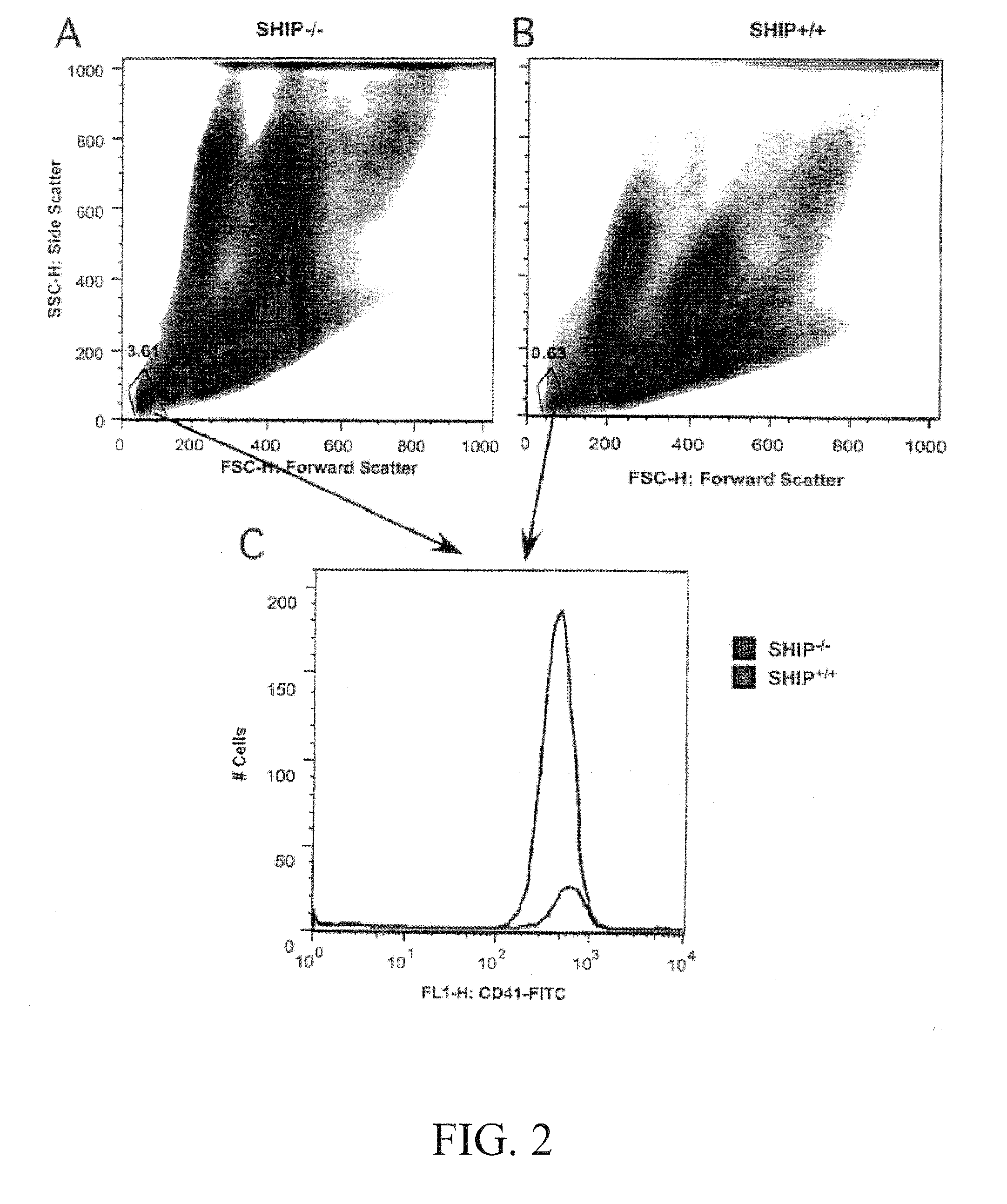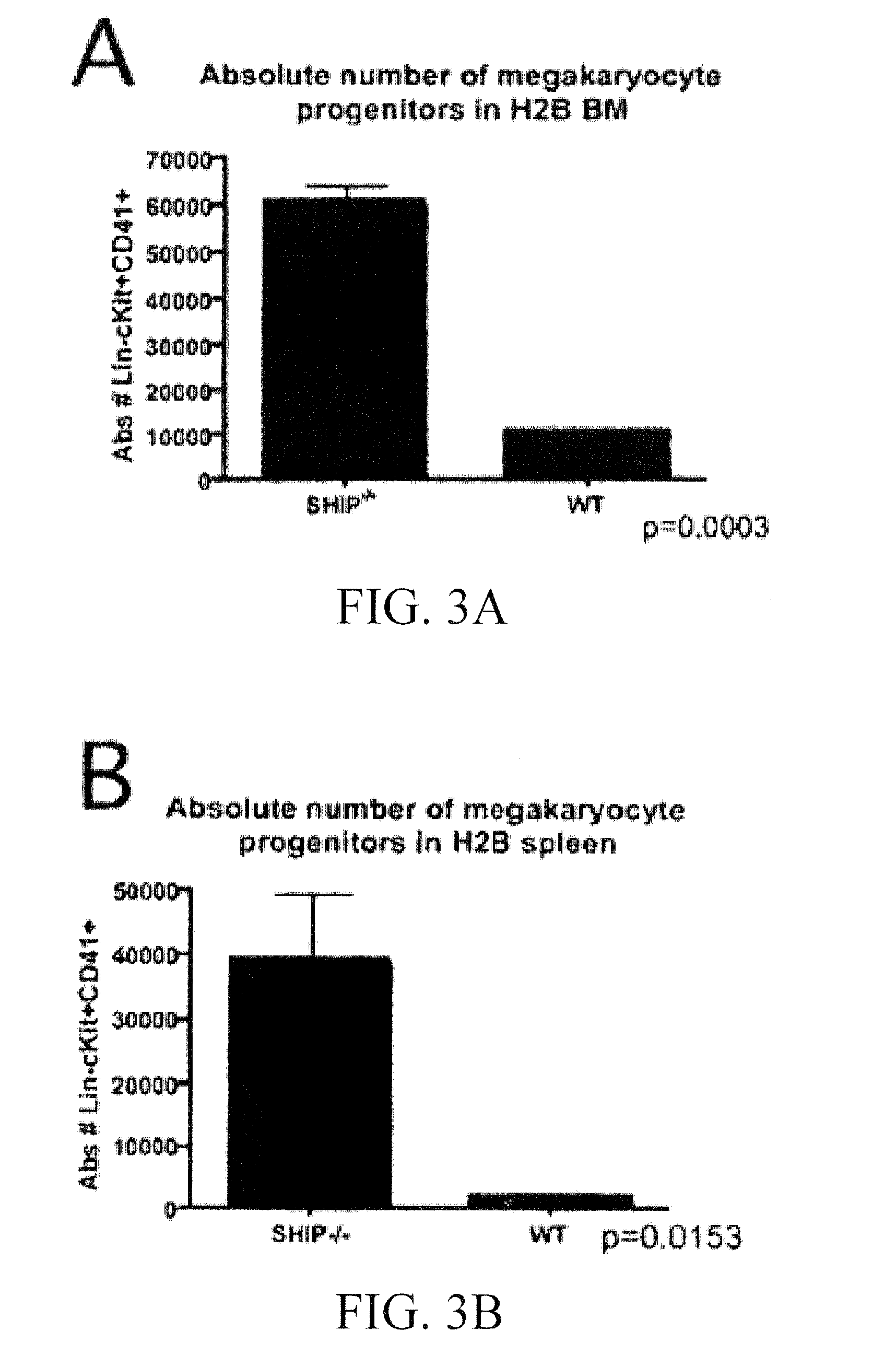Ship-deficiency to increase megakaryocyte and platelet production
a megakaryocyte and platelet technology, applied in the field of ship deficiency to increase megakaryocyte and platelet production, can solve the problems of high platelet transfusion cost and patient at risk of infection by blood-borne pathogens, and achieve the effect of increasing the frequency of megakaryocyte progenitors
- Summary
- Abstract
- Description
- Claims
- Application Information
AI Technical Summary
Benefits of technology
Problems solved by technology
Method used
Image
Examples
example i
[0090]As shown in FIG. 1, SHIP1-deficiency increases the number of megakaryocytes (CD41+c-kit−) and megakaryocyte progenitors (CD41+c-kit+) in the hematopoietic compartment. Bone marrow, spleen and blood cells were stained for CD41, c-kit and a Lin panel (CD3, CD4, CD8, B220, Mac1, Gr1, Terr119). CD41 versus c-kit contour plots are shown after gating on Lin-cells in the indicated tissue. Increases in megakaryocyte progenitors (CD41+c-kit+) are evident in the bone marrow and spleen of the SHIP-deficient animal. Increased numbers of megakaryocytes (CD41+c-kit−) are found in the spleen and blood of the SHIP-deficient animal. Multiple SHIP1− / − and WT littermates were analyzed and the statistical significance of these increases is shown in FIG. 3.
example ii
[0091]Referring now to FIG. 2, SHIP1-deficiency increases the number of circulating platelets. Fluorescence-Activated Cell Sorter (FACS) analysis of peripheral blood cells stained with anti-CD41(megakaryocyte / platelet marker) from SHIP1-deficient (SHIP− / −) (A) and normal (SHIP+ / +) (B) mice. A, B. Platelets were initially quantitated based on their size (small forward and obtuse light scattering cells indicated by blue gates in A and B). C. The platelet identity of these small light scatter cells was confirmed by their expression of the CD41 marker.
example iii
[0092]Statistical analysis of increased megakaryocyte progenitors, megakaryocytes and platelets in SHIP-deficient (SHIP− / −) mice are depicted in FIG. 3. A, B. Absolute numbers of megakaryocyte progenitors as defined by CD41+c-kit+ expression (see FIG. 1) were significantly increased in sites of primary (bone marrow, BM) and extramedullary (spleen) sites of hematopoiesis in SHIP1-deficient mice as compared to normal mice (WT). C, D. Absolute megakaryocyte numbers are increased in peripheral hematopoietic tissues (spleen and blood) of SHIP1-deficient mice (see FIG. 1). E. Platelet numbers are increased in the blood of SHIP1-deficient mice relative to normal mice (see FIG. 2). All p-values were determined by a two-tailed Students' T-test. A p-value of less than 0.05 indicates the increased numbers for the above cell populations in SHIP-deficient mice (SHIP− / −) are highly significant as compared to normal mice.
PUM
| Property | Measurement | Unit |
|---|---|---|
| critical threshold | aaaaa | aaaaa |
| frequency | aaaaa | aaaaa |
| size | aaaaa | aaaaa |
Abstract
Description
Claims
Application Information
 Login to View More
Login to View More - R&D
- Intellectual Property
- Life Sciences
- Materials
- Tech Scout
- Unparalleled Data Quality
- Higher Quality Content
- 60% Fewer Hallucinations
Browse by: Latest US Patents, China's latest patents, Technical Efficacy Thesaurus, Application Domain, Technology Topic, Popular Technical Reports.
© 2025 PatSnap. All rights reserved.Legal|Privacy policy|Modern Slavery Act Transparency Statement|Sitemap|About US| Contact US: help@patsnap.com



